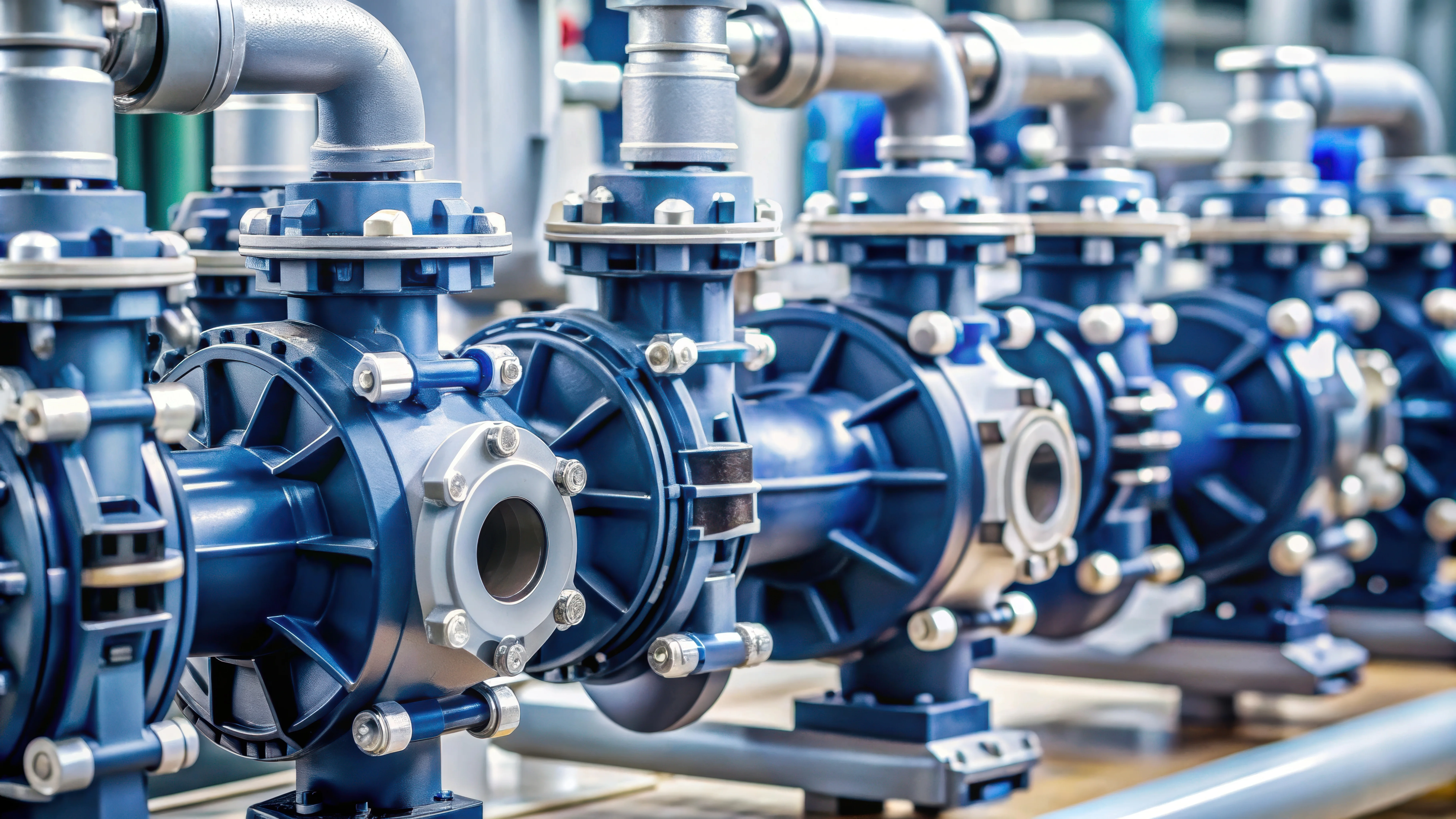If you’re running a manufacturing plant, efficiency is everything. Every second counts, every drop of fluid matters, and every piece of equipment must pull its weight. That’s where diaphragm pumps come in—these underappreciated fluid handling equipment can revolutionize your operations.
Read on to learn why diaphragm pumps are game-changer fluid handling systems and how they can boost your productivity, cut costs, and keep things running smoothly in your manufacturing facility.
What are Diaphragm Pumps
Diaphragm pumps are positive displacement pumps that use a flexible diaphragm to move fluids. Instead of relying on impellers or gears like other fluid handling technologies, they use a back-and-forth motion to create suction and discharge. This design makes them useful for a wide range of industrial applications, from handling everything from chemicals and slurries to viscous liquids—all without breaking a sweat.
You’ll find diaphragm pumps in industries like pharmaceuticals, food processing, wastewater treatment, and chemical manufacturing. Why? Because they’re tough, reliable, and built to last. Remember: only the best fluid handling products from top manufacturers and their sites like knf.com/en/global and so on can provide such performance.
Why Diaphragm Pumps Outperform Traditional Pumps
Not all pumps are created equal. While centrifugal and gear pumps have their place, diaphragm pumps offer unique advantages that make them ideal for demanding manufacturing environments.
1. They Handle Tough Fluids with Ease
Got abrasive slurries or corrosive chemicals? No problem. Diaphragm pumps can move thick, sticky, or aggressive fluids without clogging or wearing down quickly. Their design prevents internal damage, so you spend less time on maintenance and more time on production.
2. They are Self-Priming and Run Dry Safely
Ever had a pump fail because it ran dry? Diaphragm pumps don’t just self-prime—they can operate dry without immediate damage. That means fewer emergencies and less downtime when things don’t go as planned.
3. They Offer Precise Flow Control
Need consistent and repeatable fluid transfer for your manufacturing operations? Diaphragm pumps deliver precise flow rates, making them perfect for dosing, batching, or any application where accuracy matters.
4. They Reduce Energy Costs
.jpg) With fewer moving parts and efficient fluid displacement, diaphragm pumps often consume less energy than traditional pumps. That’s money back in your pocket over time.
With fewer moving parts and efficient fluid displacement, diaphragm pumps often consume less energy than traditional pumps. That’s money back in your pocket over time.
Now that you know about the different characteristics of diaphragm pumps, the following section will cover how they help improve your operation's efficiency rates.
How Diaphragm Pumps Boost Operational Efficiency
Efficiency isn’t just about speed—it’s about reliability, cost savings, and minimizing headaches. Diaphragm pumps make your life easier by allowing for less downtime and more productivity, lower upkeep requirements, a safer working environment, and so on.
Breakdowns kill efficiency. Diaphragm pumps are built to last, with robust materials that resist wear and tear. That means fewer unplanned stops for repairs and more continuous operation.
Next, forget about constant part replacements. With no internal seals or rotating components to fail, diaphragm pumps require minimal upkeep. Just routine checks, and you’re good to go.
Leaks and spills are dangerous—and expensive. Diaphragm pumps seal fluids tightly, reducing the risk of hazardous exposure. Plus, their efficient operation means less wasted material and cleaner processes.
Finally, switching between fluids? Diaphragm pumps adjust easily, eliminating the need for multiple pump systems. One pump can handle a variety of tasks, simplifying your workflow.
Key Industries That Benefit from Diaphragm Pumps
Not sure if diaphragm pumps are right for you?
Check out how they’re transforming these sectors:
- Chemical Processing: From acids to solvents, diaphragm pumps safely transfer aggressive chemicals without corrosion or leakage.
- Food and Beverage: Hygienic designs ensure no contamination, making them ideal for syrups, dairy, and other sensitive products.
- Pharmaceuticals: Precision and sterility are critical—diaphragm pumps meet strict industry standards while handling delicate fluids.
- Wastewater Treatment: Handling sludge and abrasive particles? Diaphragm pumps power through where others fail.
Those are just some of the most recognizable real-world applications of diaphragm pumps. You may not notice it but they have played a bigger role in your life than you could've ever imagined.
Choosing the Right Diaphragm Pump for Your Needs
Not all diaphragm pumps are the same. The following are what should you consider before investing: material and compatibility, flow rate and pressure requirements, type of operation, and ease of maintenance.
First, make sure the pump’s wetted parts (diaphragm, valves, housing) match the fluids you’re handling. Teflon, stainless steel, and the like are common options. Remember to match the pump’s specs to your application as well. Too small, and it’ll struggle. Too big, and you’re wasting energy.
Next, choose between air-operated or electric diaphragm pump. Air-operated diaphragm pumps are explosion-proof and ideal for hazardous areas. Electric models, on the other hand, offer more precise control for sensitive processes.
Lastly, look for pumps with quick-access parts and simple designs to minimize service time.
Final Thoughts: Why You Should Make the Switch
If you’re still using outdated pumps, you’re leaving operational efficiency on the table. Diaphragm pumps deliver reliability, versatility, and cost savings—all in one rugged package. Whether you’re battling corrosive chemicals, sticky slurries, or precision dosing, there’s a diaphragm pump that fits your needs.
Upgrading your fluid handling isn’t just an improvement—it’s a competitive advantage. So why wait? Your next efficiency boost is just a pump away.






